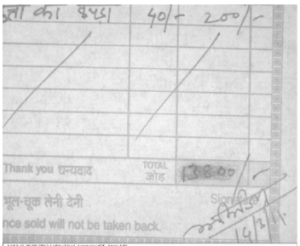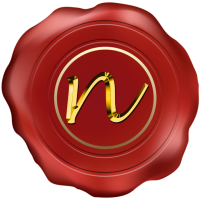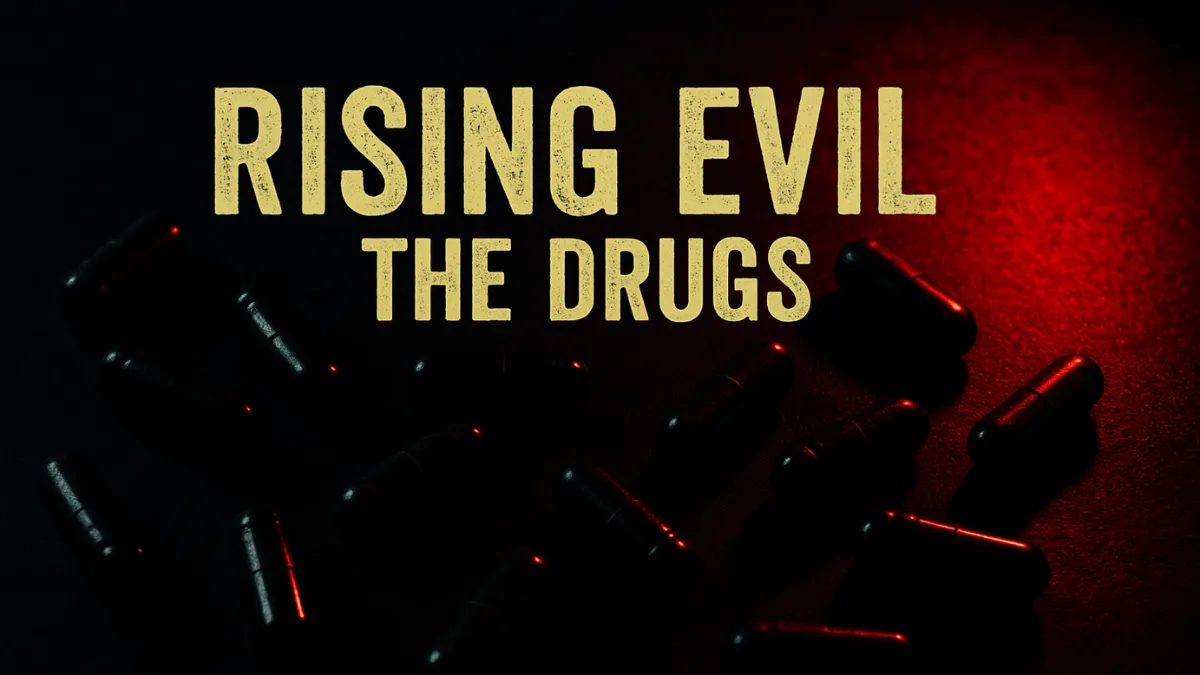Last Updated on May 18, 2025 by Nyayik Vigyan
Forgeries in documents, Question document embraces various appellations such as forensic document examination, document examination, handwriting examination, also sometimes referred to as handwriting analysis.
The growth of science leads to growth in this field. Skilled students begin focusing on this field and manifolded appurtenance devices and apparatuses.
An expert witness role is being placed who is scientifically, emphatically, and not just empirically.
Each era has its crimes, due to crimes happening in various era’s it creates a sense of understanding within the society for the drastic need of science in the field of question documents. The question documents deal with the scientific way of thinking, it is the inter-relation between the observed and the factual phenomenon, and the discovery of certain universal patterns is ascertained.
Document forgery is more than just a criminal offence—it’s a growing threat that undermines trust in legal, financial, and administrative systems. Whether it involves fake signatures, altered documents, or forged certificates, understanding the science behind document forgery is essential in today’s world. This article delves into the various types of forgery, real-world examples, and the forensic science used to uncover deception. The article also focuses on the various types of forgeries encountered in questioned documents, as well as some ways to resolve them. Scientific methods have been used to construct a hypothesis based on the observations and measurements. Science is greater than philosophy, aiming for a purpose; the main purpose of scientific discoveries is to help mankind and has been a hallmark of the 19th and 20th centuries.
Forgeries and Their Detection
An average unaided eye can distinguish only a small amount of difference; the fineness of a particular line can be seen only about 200 to 250 times to the inch. Lines smaller than this seem to be a solid mass or tint.
The microscope is the instrument used to see physical evidence directly; by no means is it impossible to see physical evidence with the naked eye. Hence, the variety of questions a microscope can answer. In many instances, the evidence is conclusive. The microscope serves to discover the hidden facts within it.
What is Forgery?
Forgery refers to the act of creating, altering, or imitating documents, signatures, or other objects with the intent to deceive. It is typically committed to gain a financial or legal advantage. Examples include forged wills, financial instruments, and academic certificates.
Under Indian law, forgery is defined in Sections 463 to 471 of the Indian Penal Code (IPC), and it is considered a cognizable offence. In other jurisdictions, such as the United States, forgery is usually classified as a felony, depending on the nature of the document forged.
Forgery means making a false document with the intent on the part of the maker to defraud. The problem of identification is inseparably related to the problem of forgery; the necessity for a scientific identification of writing or signatures arises from the fact that forged documents are usually presented as genuine, and genuine as vice versa, sometimes being mentioned as forged.
Usually, signatures are forged for the signature that authenticates a document and which is relatively easy to forge only by the signature rather than forging the whole document.
Why Is Document Forgery Dangerous?
Forgery is not just unethical; it is criminal. It can lead to financial loss, wrongful imprisonment, identity theft, and defamation. A forged signature on a legal document can alter property rights or redirect bank transactions. Even digital documents aren’t safe, especially with AI-based manipulations becoming more common.
Types of Forgeries
For identification and comparison of signatures and writings, forgeries are classified under: –
- Simulated/Copied forgery/Forgery by Memory
- Traced forgery
- Freehand forgery (forgery without model/impersonation)
- Transplanting revenue stamps bearing a genuine signature
- Erasures and Alterations in Documents.
Simulated Forgery – It’s a simulation or imitation of genuine writing. The method of this class of forgery production is the same as employed by pupils in following a copy. The type of writing understanding strictly depends on the skill of the examiner to classify it according to its class of forgery.

Types of Forgeries in Questioned Documents
Fig.1 (a) Genuine Signature (b) Simulated Signature
Source CITATION Mig05 l 16393 (Miguel A. Ferrer, 2005)
The crime is necessarily done with secrecy, grouped with the collaboration of time, circumstances and place. The history of crimes mentions that in most cases, the culprit is a beginner who has no experience, with no special preparations for a task, without realising its difficulty.
Traced Forgery -The Trace Forgery Name Signifies the result of an attempt to transfer to a fraudulent document an exact facsimile of genuine writing by some tracing process.
Traced forgeries are the result of hesitation shown, an abnormal change in the direction, the inconsistency of pen pressure, and unnatural movement interruptions in a more pronounced manner than simulation, but this again depends upon the scientific process of tracing employed and the skill of the operator.

Types of Forgeries in Questioned Documents
Fig.2 Samples showing traced forgery.
Source- CITATION Kop07 l 16393 (Koppenhaver, 2007)
Usually, the culprit’s main effort focuses on making the forged signature similar to the genuine one, which he considers the method of tracing among the best technique compared to other techniques of forgery.
Freehand Forgery – Forgery without the need for a model, or simply can be said as a forgery by impersonation. When a person just uses the signature in a normal manner or a modified manner, representing himself to be that person with an ultimate motive, such a signature is a forgery.

Types of Forgeries in Questioned Documents
Fig.3: Displaying freehand forgery comparison with other types of forgeries. Signatures.
Source CITATION Jer09 l 16393 (Lavay, 1909)
In this type of forgery, no attempt is made to model the signature is not being used for the forgery; it’s just signed by freehand. Once the genuine signature of an actual person is available, the forgery is obvious, and proving the same is not as difficult in such cases.
Transplanting revenue stamps bearing a genuine signature – A Genuine signature is utilised by the transplantation of revenue stamps containing the original signature, which is genuine.
The stamp, which has the genuine signature, is being removed from any other document and is affixed to the desired document
Erasures and Alterations in Documents– Fraudulent changes are made in such a way as to avoid detection and may not be discovered for a long time if attention is not given.
Will notes and other important documents have the probability of maximum alterations?
The most common and clumsiest type of erasure considered is abrasion, by which method the paper is being removed, containing the ink upon it.

Types of Forgeries in Questioned Documents
Fig.4 Obliterated figures visible under floodlight.
Source CITATION Ram18 l 16393 (Ramesh Kumar Pandey, 2018)
Other Types of Forgery (with Real-World Examples)
Signature Forgery: Most common form, often seen in banking and legal disputes.
Example: A person signs another’s name to access their bank account.
Document Forgery: Alteration of legal contracts, wills, or agreements.
Example: Changing the clauses of a rental agreement.
Forgery of Financial Instruments: Includes cheques, promissory notes, and money orders.
Example: Modifying a cheque’s amount.
Forgery in Absentee Notes and Medical Certificates: Often used by students and employees to justify absence.
Digital Forgery: This includes tampering with electronic records, scanned documents, and even AI-generated fake certificates. Cybercriminals now use tools like Photoshop, PDF editors, and deepfake technology to forge documents that can pass casual scrutiny.
Alloy Forgery: A less common but emerging concern where counterfeit metals or materials are passed off as genuine—more relevant in the manufacturing or jewelry industry.
Is Forgery a Felony?
Yes, forgery is considered a felony in many legal systems, especially when:
Financial loss is involved
Government documents are forged
Forgery is part of organised crime
Under Indian Law: Sections 463 to 471 IPC
In the US: Classified as a felony, punishable by up to 10 years imprisonment in severe cases
Tools and Techniques Used to Detect Forgery
Forensic document examiners use a variety of techniques, including:
- Microscopic Examination: Used to analyse ink flow, pen pressure, and paper texture.
- Spectral Analysis: Helps identify ink composition and detect alterations.
- Handwriting Analysis: Studies signature strokes, rhythm, and speed.
- Electrostatic Detection Apparatus (ESDA): Reveals indentations on paper not visible to the naked eye.
- Digital Forensics: Tools that analyse metadata in PDFs, Word documents, or digital signatures.
The Scientific Approach to Forgery Detection
Science enables us to go beyond mere suspicion and provides empirical evidence. While philosophy seeks truth through logic, science applies tools, methods, and experiments to uncover facts. This is particularly important in forgery cases where human intuition can be flawed.
Every document tells a story—ink types, signature strokes, and even paper fibres can reveal inconsistencies. Experts apply forensic principles, backed by statistics and experimentation, to determine authenticity.
Conclusion
Forgery may look like a minor offence, but its consequences are profound and far-reaching. Thanks to the rigorous methods of forensic science, we can reliably uncover forgeries and bring culprits to justice. As this field evolves, staying informed is essential.
References
- Koppenhaver, K. M. (2007). Forensic Document Examination: Principles and Practice. Humana Press.
- Lavay, J. B. (1909). DISPUTED HANDWRITING. AMERICAN BANKERS’ ASSOCIATION.
- Miguel A. Ferrer, J. B. (2005). Offline geometric parameters for automatic signature verification using fixed-point arithmetic. IEEE Transactions on Pattern Analysis and Machine Intelligence.
- Osborn, A. S. (1929). Questioned documents. London: Boyd printing company.
- Ramesh Kumar Pandey, M.S. (2018). Forensic Investigation of Suspected Document for Alteration, Erasures & Obliteration. Galore International Journal of Applied Sciences and Humanities.
Author: Ishan Tiwari
 Ishan Tiwari is a graduate from the Amity Institute of Forensic Science in Forensic Science, a keen and passionate learner. He has also completed training from eminent organisations such as the Central Forensic Science Laboratory, Chandigarh & Regional Forensic Science Laboratory, Kota. Ishan is also a Certified Information Security Management System Trainer from BSI, also actively publishes research papers and presentations at various conferences.
Ishan Tiwari is a graduate from the Amity Institute of Forensic Science in Forensic Science, a keen and passionate learner. He has also completed training from eminent organisations such as the Central Forensic Science Laboratory, Chandigarh & Regional Forensic Science Laboratory, Kota. Ishan is also a Certified Information Security Management System Trainer from BSI, also actively publishes research papers and presentations at various conferences.
Disclaimer: This article has been published in Forensic Science Application, NVAFRCI, 1(14):2020












Leave a Reply